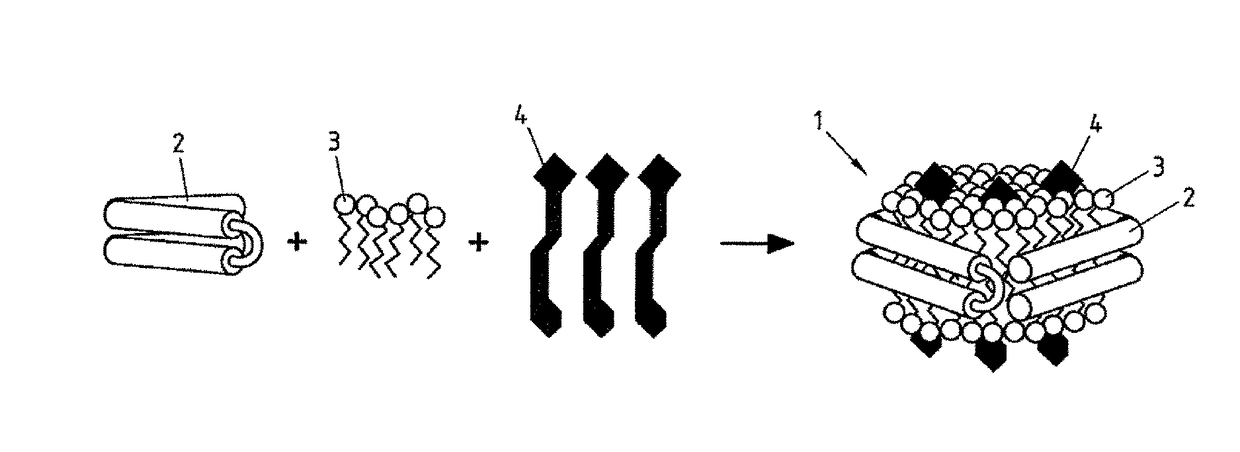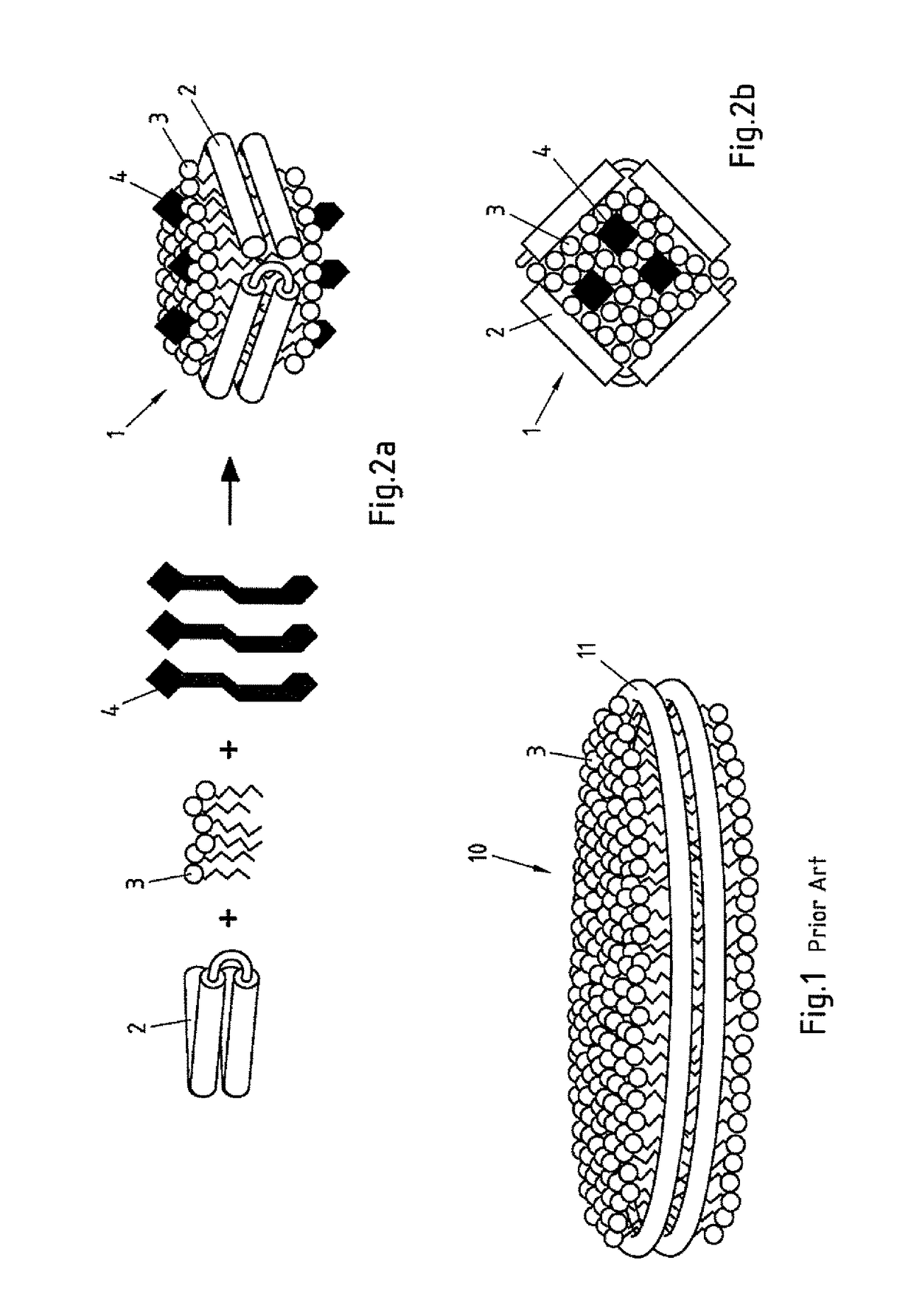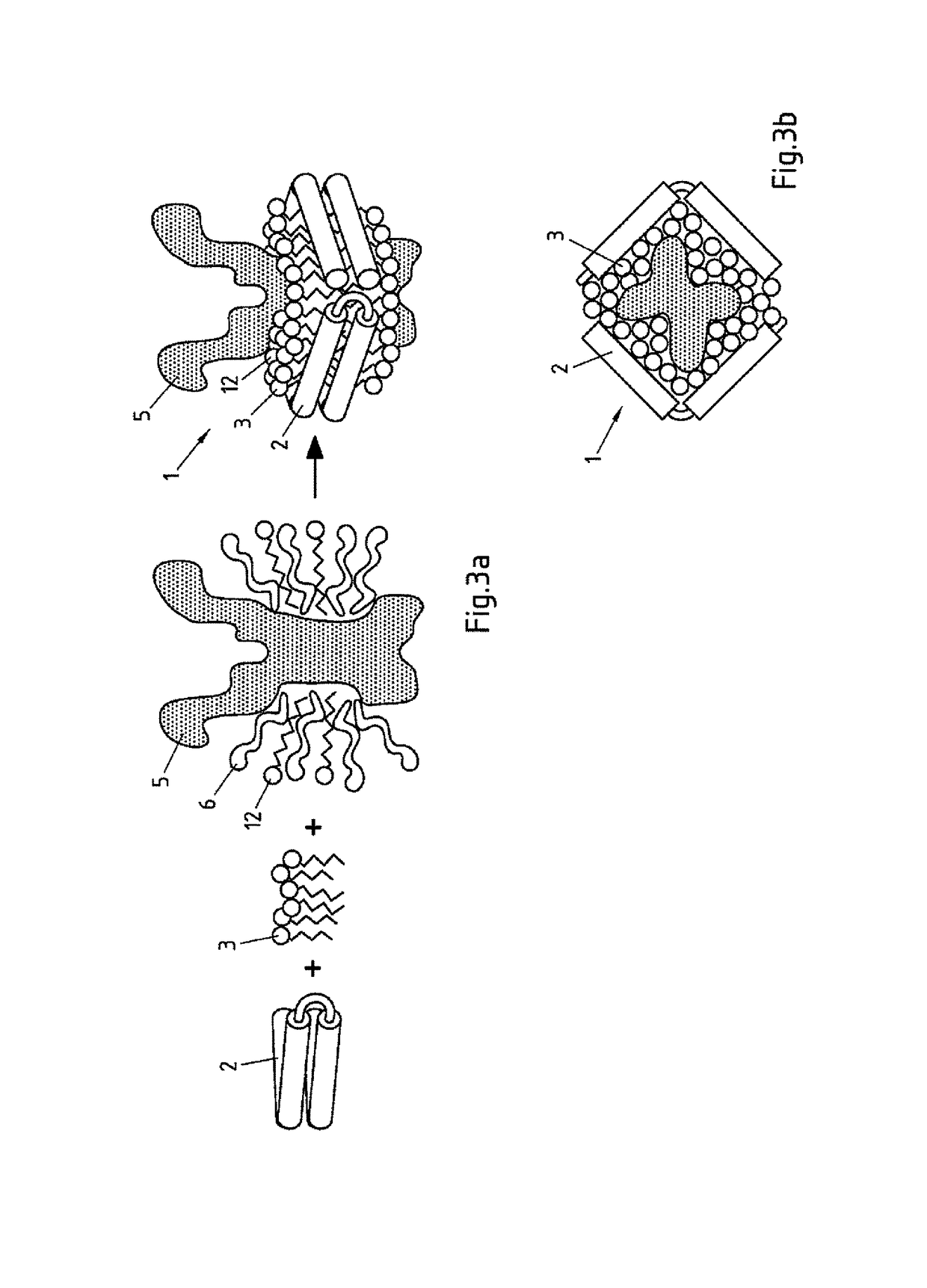Salipro particles
a technology of lipoproteins and particles, applied in the field of lipoprotein particles, can solve the problems of affecting biocompatibility, membrane proteins and hydrophobic compounds are notoriously difficult to handle, and membrane proteins are difficult to study, and achieve the effect of a certain degree of thermostability and robust over concentrating
- Summary
- Abstract
- Description
- Claims
- Application Information
AI Technical Summary
Benefits of technology
Problems solved by technology
Method used
Image
Examples
example 1
[0186]Purified saposin A was prepared as follows. Saposin A protein expression was carried out using a vector with the coding region for human saposin A (SEQ ID NO: 1) inserted into a pNIC-Bsa4 plasmid and transformed and expressed in E. coli Rosetta gami-2 (DE3) (Novagen) strains. Cells were grown at 37° C. in TB medium supplemented with Tetracycline, Chloramphenicol and Kanamycin and induced with 0.7 mM IPTG. Three hours after induction, the cells were collected by centrifugation at 12.000×g for 15 min. The supernatant was discarded, the cell pellet was resuspended using lysis buffer (20 mM Hepes pH 7.5, 150 mM NaCl, 20 mM Imidazol) and disrupted by sonication. Lysates were subjected to centrifugation at 26.000×g for 30 min, the supernatant heated to 85° C. for 10 min, followed by an additional centrifugation step at 26.000×g for 30 min. Preparative IMAC purification was performed by batch-adsorption of the supernatant by end-over-end rotation with Ni Sepharose™ 6 Fast Flow medium...
example 2
[0187]For the reconstitution of Salipro particles (denoted “Saposin+Lipids pH 7.5” in FIG. 8), 10 μl of purified saposin A (1.2 mg / ml, 20 mM Hepes pH 7.5, 150 mM NaCl) were mixed with 1.6 μl of a 1% (w / v) LDAO-detergent solution and 4 μl of a brain-lipid solution (5 mg / ml brain lipids, Sigma-Aldrich; 50 mM Hepes pH 7.5, 150 mM NaCl, 0.28% (w / v) DDM) and incubated for 10 min at 37° C. Subsequently, 49.4 μl GF-buffer pH 7.5 was added to the mixture to obtain a final reaction volume of 65 μl. After 10 min incubation at room temperature, the mixture was subjected to a gel-filtration step on a Superdex™ 200 5 / 150 GL analytical gel filtration column using an ÄKTAmicro™ chromatography system (both GE Healthcare) equipped with the Autosampler A-905, which automatically injected 25 μl of protein containing sample. Analytical gel filtration runs were performed at 4° C. at a flow rate of 0.2 ml / min in GF-buffer pH 7.5.
example 3
[0191]The aim of this experiment was to assess the importance of the presence of lipids for the method according to the invention.
[0192]10 μl of purified saposin A (1.2 mg / ml, 20 mM Hepes pH 7.5, 150 mM NaCl) were mixed with 1.6 μl of a 1% (w / v) LDAO-detergent solution and 4 μl of a brain-lipid solution (5 mg / ml brain lipids, Sigma-Aldrich; 50 mM Hepes pH 7.5, 150 mM NaCl, 0.28% (w / v) DDM) and incubated for 10 min at 37° C. Subsequently, 49.4 μl GF-buffer pH 7.5 was added to the mixture to obtain a final reaction volume of 65 μl. After 10 min incubation at room temperature, the mixture was subjected to a gel-filtration step as above, using GF-buffer 7.5 (cf. “Saposin+LDAO+Lipids pH 7.5” in FIG. 9).
PUM
| Property | Measurement | Unit |
|---|---|---|
| diameter | aaaaa | aaaaa |
| diameter | aaaaa | aaaaa |
| diameter | aaaaa | aaaaa |
Abstract
Description
Claims
Application Information
 Login to View More
Login to View More - R&D
- Intellectual Property
- Life Sciences
- Materials
- Tech Scout
- Unparalleled Data Quality
- Higher Quality Content
- 60% Fewer Hallucinations
Browse by: Latest US Patents, China's latest patents, Technical Efficacy Thesaurus, Application Domain, Technology Topic, Popular Technical Reports.
© 2025 PatSnap. All rights reserved.Legal|Privacy policy|Modern Slavery Act Transparency Statement|Sitemap|About US| Contact US: help@patsnap.com



